Introduction
Welcome to a musical journey through The Doors‘ best albums. The Doors are famous for their unique sound and charismatic frontman, Jim Morrison. They have had a lasting impact on rock music. In this article, we will rank their albums from least known to most iconic. Our ranking considers popularity, musical innovation, and reception by fans and critics. Whether you’re a long-time fan or new to The Doors. You’ll discover fresh insights into each album. And what makes them special.
So, let’s start this exploration of The Doors’ best albums ranking!
“Other Voices” – Rank #7
“Other Voices” – The Doors’ first album post Jim Morrison’s death. A significant shift for the band. Released in October 1971 by Elektra Records. This album was the band’s seventh studio release. It was also the first not to feature Morrison’s iconic voice. The recording began in June 1971. Ray Manzarek, Robby Krieger, and John Densmore started recording. They hoped for Morrison’s return from Paris. Unfortunately, after his untimely demise, the band pressed on with producer Bruce Botnik. They completed the album.
“Other Voices” showcased The Doors’ musical prowess, despite lacking Morrison’s charismatic vocals. Manzarek and Krieger took over, adding a fresh dynamic. The album had some unevenness and uninspired vocals, contrasting the band’s usual energy. Still, it achieved respectable success. Lead single “Tightrope Ride” received extensive airplay. It helped the album reach No. 31 on the Billboard 200. The Doors also embarked on a well-received U.S. tour to support it.
“Other Voices” shows the band’s resilience, adapting to adversity. It gives fans a glimpse into a different era of The Doors’ musical journey.
“Full Circle” – Rank #6
“Full Circle” is The Doors’ eighth studio album. They released it in August 1972, and it is the second one without their iconic frontman Jim Morrison. It represents the band’s continued evolution and experimentation in the post-Morrison era. Recorded at Hollywood’s A&M Studio. The album featured the trio: Ray Manzarek, Robby Krieger, and John Densmore. They ventured into new musical territories, especially jazz. They collaborated with top-tier session musicians.
“Full Circle” diverged significantly from the band’s earlier works. It had a mix of Latin fusion and intricate funk. Standout tracks: “The Piano Bird” and “Verdilac”. But, this change caused tensions. Manzarek was into jazz. The others leaned towards rock. The album reached its peak at No. 68 on the Billboard chart, receiving a mixed reception. Critics pointed out its lack of focus compared to previous albums. Critics praised the musical interplay of some tracks. It reminded listeners of The Doors’ earlier glories.
“Full Circle” achieved notable success with the global hit “The Mosquito.” This track has become one of the band’s most enduring internationally. This album was a turning point for The Doors. It showcased their resilience and willingness to experiment. They embraced significant change.
“The Soft Parade” – Rank #5
“The Soft Parade,” released on July 18, 1969. It stands as The Doors’ most experimental album. A bold departure from their earlier sound. Paul A. Rothchild produced the album. It incorporated brass and string arrangements. This diverged significantly from the rock foundations of their previous work. Lead singer Jim Morrison’s reduced involvement in songwriting. This led to guitarist Robby Krieger’s increased creative contributions.
Peaked at number six on the Billboard 200. Mixed reactions received. Critics criticized the orchestral arrangements. Some saw it as a move towards popular music. This led to a disconnect with the band’s original underground music scene. Reviews varied. Some criticized its “syrupy arrangements” and “pretentious” art rock attempts. Others praised its superior musical quality and experimentation.
Historically, experts have reassessed “The Soft Parade”. Critics now acknowledge its strengths, like the hit “Touch Me.” However, it remains a divisive work in The Doors’ catalog. The album demonstrated the band’s willingness to experiment and push boundaries. Even if it meant polarizing their audience.
“Waiting for the Sun” – Rank #4
The Doors released their third studio album, “Waiting for the Sun,” on July 3, 1968. It marked a significant transition in the band’s musical journey. Recorded at TTG Studios in Los Angeles. January to May 1968. The album achieved remarkable success. It became their only number one album on the Billboard 200. It also included the hit single “Hello, I Love You,” which reached number one in the US.
The band faced challenges during this period. Drummer John Densmore called it the “third album syndrome.” They struggled with a shortage of new material. This led to improvisation and the use of older songs not previously recorded. The recording sessions: marred by Jim Morrison’s worsening alcoholism. Tensions and difficulties arose.
Despite its commercial success, the album received mixed critical reactions. Critics called it pretentious and over-arranged. Some disliked the commercial appeal of “Hello, I Love You”. But others praised it for having less self-indulgent songs. Highlights include “The Unknown Soldier” and “Five to One”.
“Waiting for the Sun” displayed The Doors’ musical evolution. They experimented with various genres, marking a pivotal moment in their discography. It combined commercial success with creative exploration.
“Strange Days” – Rank #3
“Strange Days,” released on September 25, 1967. It’s The Doors’ second studio album. It showcases their early experimentation with psychedelic rock. It reached number three on the US Billboard 200. It contained hit singles like “People Are Strange” and “Love Me Two Times”.
Recorded at Sunset Sound Recorders in Hollywood. The album was a product of innovative studio techniques. Producer Paul A. Rothchild and engineer Bruce Botnick used an 8-track recording machine. It allowed the band to experiment with unusual instrumentation. They even pioneered the use of the Moog synthesizer.
The album also explored musique concrète techniques. Keyboardist Ray Manzarek played his introduction for “Unhappy Girl” backwards. This created unique sonic effects.ts.
“Strange Days” had mixed reviews initially, but its critical standing improved over time. Contemporary reviews loved its energy and intricate construction. They compared it to a Greek tragedy in musical form. Retrospective assessments highlighted the album’s ambition and unity. Slant Magazine describes it as a document of a sometimes-beautiful era. Sometimes scary. Often twisted. Fear and idealism intertwined.
It’s highly ranked in multiple lists. Rolling Stone named it one of “The 500 Greatest Albums of All Time” and “The 40 Essential Albums of 1967”.
“Strange Days” showcases The Doors’ innovative spirit. The album blends a complex musical landscape. It explores profound lyrical themes. It stands out in their discography.
“Morrison Hotel” – Rank #2
The Doors released their fifth studio album, “Morrison Hotel,” on February 9, 1970. It marked a return to the band’s blues rock roots. This was a notable change. Replaced elaborate brass and string arrangements. It differed from their previous album, “The Soft Parade”. The band recorded the album in Los Angeles, incorporating blues rock guitar elements. Musicians like Lonnie Mack and Ray Neapolitan made contributions.
The album was an immediate success, reaching No. 4 on the Billboard 200 and becoming the band’s highest-charting studio album in the UK. The single “You Make Me Real” / “Roadhouse Blues” also received strong FM radio play.
Critics hailed “Morrison Hotel” as a comeback. Dave Marsh of Creem magazine called it “the most horrifying rock and roll I’ve ever heard.” He praised its raw power and quality. Circus magazine also lauded it as possibly the best album from The Doors. Some critics, like Lester Bangs of Rolling Stone, had mixed feelings. They found parts of the album uneven. However, they praised tracks like “Roadhouse Blues”.
The album received high ratings in retrospective reviews. Its cohesive and tight rock sound receives praise. Robbie Krieger’s phrasing and Jim Morrison’s vocal presence are especially noted.
“Morrison Hotel” – a pivotal moment in The Doors’ history. It showcases their ability to reinvent and return to their musical foundations. Resonating with fans and critics alike.
“The Doors” (Self-Titled) – Rank #1
“The Doors,” released on January 4, 1967, is the groundbreaking debut album of the American rock band. Recorded at Sunset Sound Recorders in Hollywood, California. Produced by Paul A. Rothchild. Renowned for its bold and innovative style. Features the extended version of “Light My Fire” and the epic “The End.” Captivated audiences with its unique blend of rock, jazz, and blues influences.
The album made a remarkable climb on the Billboard 200, peaking at No. 2 in September 1967. The edited single version of “Light My Fire,” which topped the charts, propelled its success. Mixed reception in Europe. The album’s legacy has grown. The reissue was influenced by Oliver Stone’s film “The Doors”.
“The Doors” – a critically acclaimed album, often ranked among the greatest of all time. Its depth and complexity celebrate innovative rock music and poetic lyrics. Critics praise the seamless integration of musical styles and its profound impact on the genre. Noted for exploration of consciousness and daring lyrical themes.
“The Doors” is a monumental debut. It captures the essence of an era. It sets a high bar for rock music. Few have surpassed it.
FAQ Section
What Makes “The Doors” (Self-Titled) the Best Album of the Band?
“The Doors,” their 1967 debut album, is often hailed as their best. It revolutionized rock music with its blend of rock, blues, and psychedelic sounds. It set new genre standards. “Light My Fire” achieved legendary status. The album’s experimental approach revolutionized rock music. Its poetic lyrics left an indelible mark in the late 1960s.
How Did the Band’s Music Change After Jim Morrison’s Death?
After Jim Morrison’s death, The Doors’ music underwent significant changes. Albums like “Other Voices” and “Full Circle” saw the band moving away from their earlier style. Post-Morrison albums lacked his vocals and poetic lyrics. They had a different sound with jazz and funk elements. The response received had a mixed reception. It indicated a clear departure from earlier successful works.
Are There Any Underrated Songs or Hidden Gems in The Doors’ Lesser-Known Albums?
The Doors’ discography has hidden gems. Check out tracks from “The Soft Parade” and “Waiting for the Sun”. These songs showcase the band’s range and creativity. They provide a glimpse into the band’s musical journey. Showcasing unique styles and experimentation. Worth exploring!



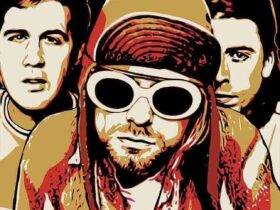

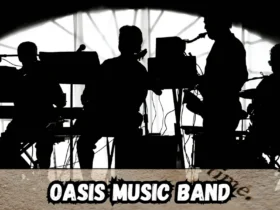

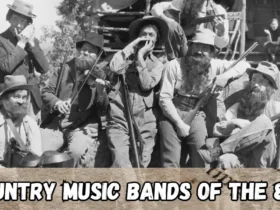

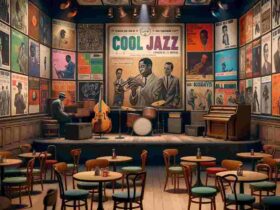

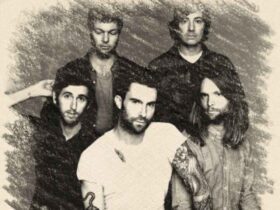

Leave a Reply